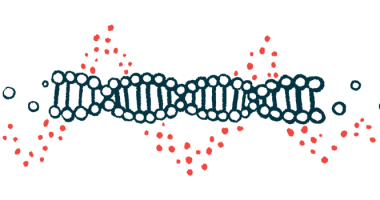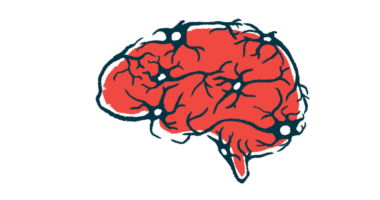Design, Development of BeatHealth System for Parkinson’s Gait Impairments Described in Study

Researchers have developed a system — a mobile app and two websites — based on musical stimuli to improve gait and reduce freezing episodes in Parkinson’s disease patients, according to a study describing the design process of the new approach.
The project, called BeatHealth, involved patients, caregivers, and health professionals from the start to produce the most useful, usable, and easy-to-use final system, with the most appropriate functionalities.
The study, “Design and development of a gait training system for Parkinson’s disease,” was published in PLOS ONE.
Parkinson’s main motor symptoms are typically associated with impaired gait. Rhythmic auditory stimulation (RAS), an approach that consists of matching a patient’s walking speed to a rhythmic sound, or piece of music, has shown beneficial effects in improving gait and reducing freezing episodes in people with Parkinson’s.
The BeatHealth system uses RAS in the form of musical stimuli and has been developed to deliver a training session for Parkinson’s patients. It consists of two sensors worn on the lower legs, a mobile application on a smartphone — which receives data from the sensors and is able to adapt the music rhythm to the user’s gait — and a cloud platform accessed through a website to store the information and allow healthcare professionals and patients to track gait progress.
The Parkinson’s Disease News Today forums are a place to connect with other patients, share tips and talk about the latest research. Check them out today!
BeatHealth’s design process was iterative and followed a user-centered methodology that incorporated the input of health professionals, patients, and caregivers.
This approach was intended to create an easy-to-use and easy-to-learn system over four phases: (1) research and exploration to adjust requirements, goals and context of use to the user; (2) concept and design to fulfill the requirements from phase one; (3) development and implementation, with input from users; and (4) evaluation of prototypes by final users to verify that requirements were met and to assess the system’s viability, usability, and functionality.
Personas, or fictional characters, interviews, standard validated questionnaires, and mock-ups were used along with the four phases. In the final phases, end-users also evaluated the system.
In phase one, 12 Parkinson’s patients and two relatives were interviewed about BeatHealth’s utility and its main functionalities. These patients were at various stages of disease severity and were also of different types of medication.
Ten patients said they would rather use this kind of system by themselves than under clinical supervision. Patients also indicated a preference for having access to step length, number of steps and time of training, and for using larger headphones due to hand function impairments.
Observation sessions were conducted in Montpellier, France, two with Parkinson’s patients and one with a healthy participant. The sessions were focused on better understanding the movement evaluation tools and techniques, as well as their impact on participants. The participants were mainly asked to walk around a marked circuit while listening to music with varying rhythmic characteristics.
In the third session, a patient had to complete tasks while using a memory app on a smartphone to evaluate issues related to managing a touch screen. Unlike when sitting or standing still, the patient was unable to complete any task when asked to walk.
“Witnessing this participant’s experience gave the observer a deeper understanding of user needs and the effects of [Parkinson’s] symptoms on the user’s interaction with their environment,” the researchers wrote.
Overall, the observation sessions led to breaking down the evaluation process into smaller parts, reducing multitasking, understanding the importance of motivation and goal-setting, simplifying data and instructions, designing the user interface, and establishing the distance to be walked during the task, as well as reducing the need for patients to enter data.
The scientists then decided to implement a web application, linked to one website for patients and another for health professionals, which, with patient authorization, enables the professional to create a training program for the patient and track his or her progress.
In phase two, the team generated paper prototypes initially evaluated by experts and stakeholders, but not by patients. A second mock-up was then created, which was evaluated by a team made up of a neurologist, a consultant, a physiotherapist, a patient, a human-computer interaction specialist, a computer science specialist, and a computer interaction designer.
Among the results of this second phase, the team found that the workflow required review to encourage the participants to send the data, the login screen needed simplification, the map screen required clarification, and volume buttons and text spacing needed improvement.
In phase three, a third version of the mock-up was evaluated, and the team focused on its viability. For the evaluation of the mobile app, four idiopathic (without known cause) Parkinson’s patients (one woman, three men, ages 64-74) with a walking disorder were recruited. They had to progress through a task flow using the prototype screens with additional tasks such as putting on sensors, connecting the charger, connecting headphones, or connecting to the WiFi network.
Interviews and discussions after the evaluation were aimed at addressing participants’ thoughts about the system, their evaluation experience, and any recommendations they had. The analyses showed that user experience in relation to connecting to WiFi and the time required to complete tasks needed improvement. In addition, the system needed further overall simplification and clarification.
A second evaluation of the mobile app was done by four patients (two women and two men, ages 46-84). They were asked to perform five tasks, which, in general, they were able to complete under appropriate guidance. They found the app user-friendly and simple, resulting in better usability and satisfaction over the previous version.
Website mock-ups were then evaluated by six patients, one relative of a Parkinson’s patient, and 11 healthcare professionals, who all valued the system’s simple and user-friendly structure. But healthcare professionals had difficulties finding particular functionalities, while patients mainly had problems in being able to read the text.
In phase four, the team incorporated changes based on the previous evaluations to create the final mobile application and websites. The most notable changes were to the home screen — such as direct access to music selection and user progress — and the screen flow associated with taking a walk.
Thirty-seven patients (20 women, ages 40-84) evaluated the final BeatHealth system over three months at home. Results showed that 78% of the participants were satisfied with the app, 72% found it easy to learn and understand, and 86% said it was clear enough. Issues with components such as sensors or phone buttons were the most frequent drawbacks. Satisfaction was higher than with the prototypes. However, only 32% of participants felt that the system helped them improve their gait.
“We can conclude that a complete methodology that involved stakeholders from the very beginning until the final evaluation of the design proved effective at producing a usable system in this particular case,” the researchers wrote.
Not measuring the system’s acceptance and adherence were among the study’s limitations and should be evaluated over longer trials, they noted.






